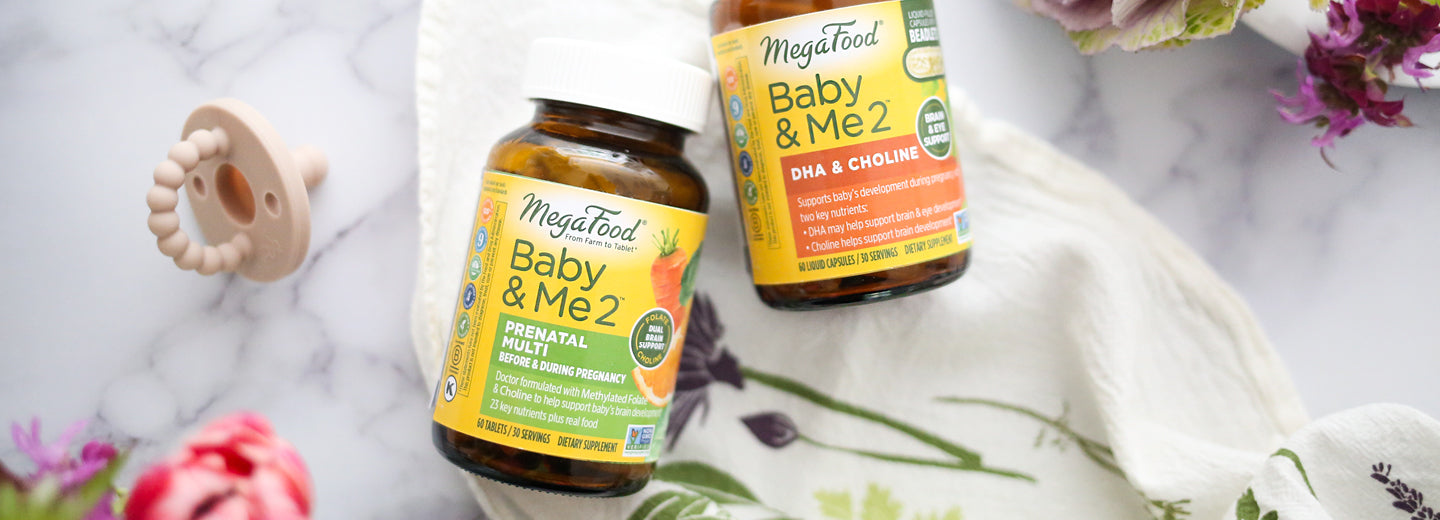Enjoying Summer Botanicals: A Quick & Easy Guide

MegaFood | June 2021
One of the best parts of spring and summer is enjoying the amazing plants that grow and thrive during this time of year. Whether you’re growing them yourself, sharing with a neighbor, or picking them up at the farmers market, it’s the best time of the year to consider using medicinal and culinary herbs. No background in botanicals? No worries. Our Summer Botanicals Guide showcases these 5 simple yet elegant herbal preparations to get you hopping:
- The Mint Family
- Topical Herbs: Arnica
- Topical Healing Herbs: Calendula
- Culinary Herbs: Sage
- Culinary Herbs: Thyme
1. The Mint Family
Summer is the perfect time to take advantage of the Mint family of plants. And we’re not just talking about the peppermint that goes great in mojitos! The Mint family is characterized by their square stems, and includes plants such as peppermint, spearmint, catnip, lemon balm, and skullcap. While these herbs dry well, they are most stunning when picked fresh. Categorized as aromatics, their crisp, bright volatile oils offer not only a pleasing experience for the senses, but house much of its medicinal value.
One of the best ways to enjoy these herbs are as cold-water infusions. While they make great tea, the volatile oils are on full display in a cold infusion, and amazingly refreshing when enjoyed over ice.
Energizing cold infusion
Place a handful of fresh peppermint in a glass jar and pour four cups of cold, filtered water on top. Cover with a lid and shake. Leave at room temperature several hours, or overnight, to steep. Remove leaves, and store water in the refrigerator. Enjoy over ice for a cooling summer drink. Should be consumed within 72 hours.
Calming cold infusion
Place a handful of fresh lemon balm, catnip, or skullcap in a glass jar and pour four cups of cold, filtered water on top. (My favorites are lemon balm on its own, or a combination of catnip and skullcap). Cover with a lid and shake. Leave at room temperature several hours, or overnight, to steep. Remove leaves, and store water in the refrigerator. Enjoy over ice for a cooling summer drink. Should be consumed within 72 hours.
2. Topical Herbs: Arnica
Ever notice that in the active summer months - hiking, sports, backyard games - that bumps and bruises become all the more common? Fortunately, there are some amazing herbs that can help with that!
Arnica is more than just a homeopathic preparation found in little white pellets. Fresh Arnica leaves support healing from bruises, swelling, and other contusions when applied topically, and can easily form the basis for a healing salve.*
Arnica Healing Salve*
Pack a glass jar with arnica leaves, and cover with oil (almond oil and sunflower oil are recommended). Cover, and allow to sit for 2-3 weeks, shaking daily. Once done, strain the oil, and use as-is as a massage oil for injured muscles. To make the salve, however, take a ½ cup of the arnica oil and heat over low heat. Add ¾ of an ounce of grated beeswax, and stir until melted. Pour into a small wide-mouth jar, or several, fasten lid, and store in the refrigerator. Apply this to bruises, bumps, and swollen injuries to aid healing.*
3. Topical Healing Herbs: Calendula
Another healing botanical that is easy to come by in the summer months is Calendula. This is often referred to as pot marigold, though not to be confused with the malodorous common garden marigold. The delicate petals of the flower are harvested and used in salves and balms to aid the healing of wounds and bug bites, making it an important piece of your summer wellness kit!* Follow the same steps as the Arnica Healing Salve (above) to make your own healing ointment with Calendula. Or, simply steep the fresh petals in hot water, strain, and use this liquid as a compress - even easier!
4. Culinary Herbs: Sage
Sage - Sage is a special herb that pairs just as well with a sore throat as it does with pumpkin or butternut squash! Sage does wonders to help soothe an itchy, irritated throat, and sage honey is a great remedy to have on hand when cold-season hits for just this reason.* When needed, enjoy a spoonful out of the jar, or stir into hot tea. Making it couldn’t be simpler!
Sage Honey
Start with a clean glass mason jar (sanitize it by submerging it in boiling water or running it through the sanitize cycle in the dishwasher, and dry). Begin with fresh sage, and chop it finely, adding to the jar until it is half-filled. Cover and fill with raw honey, and watch the air bubbles rise to the top and release. Once the bubbles are gone, add more honey to fill, leaving about ½ an inch at the top of the jar. Cover, and allow to infuse for 2-4 weeks. To strain, set the jar, uncovered, in a saucepan with cool water, and slowly warm over low heat to soften and liquefy the honey. Strain through a fine mesh sieve, and store your honey in a glass jar to use as needed.
5. Culinary Herbs: Thyme
Thyme - Another cold-season savior, the tiny aromatic leaves of the Thyme plant not only season soups, but support the lungs when they may need a little help.* Harvest thyme now, and make a honey using the instructions above, or dry to make tea when you need to kick that cough!
Be sure to set aside some of the fresh thyme (and aforementioned sage) before you make your honey, though! Chop it up with other flavor-packed herbs such as basil and parsley, cover with a good, 100% extra virgin olive oil, and sprinkle with pepper for a delicious bread-dip - or - brush on freshly-grilled vegetables upon serving.
We hope this guide helps you enjoy the beauty and benefits of some of our fave summer botanicals!



Leave a comment
This site is protected by hCaptcha and the hCaptcha Privacy Policy and Terms of Service apply.